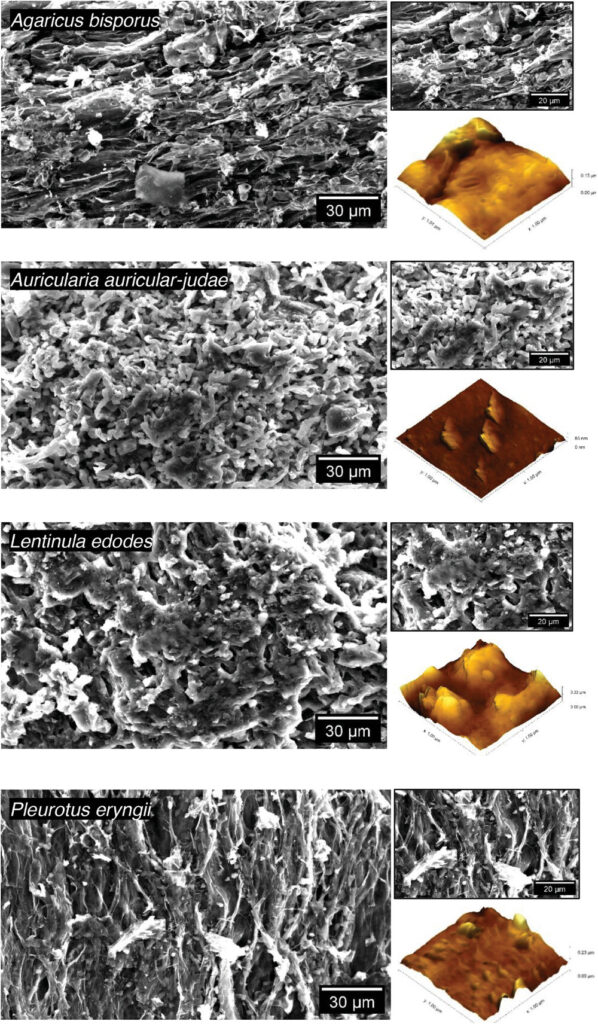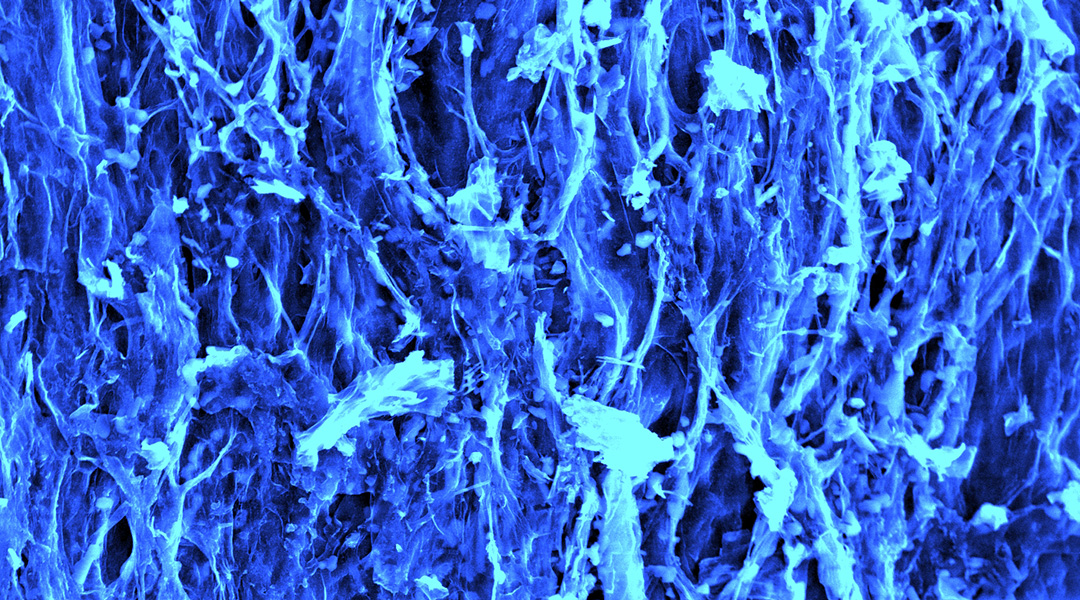Scientists are turning to fungi to create eco-friendly, carbon-based materials for use in energy storage. Traditionally, such materials have relied heavily on fossil fuels for their production.
“[Carbon] goes into your tires, into polymers to modify their properties, in addition to biogas purification, as well as energy storage,” explained Mitchell Jones, one of the authors of the study. “We can lessen our reliance on fossil resources by using fungal filaments that have been converted into carbon.”
In a recent study published in Global Challenges, the research team explored the production of carbon filaments for use in energy storage devices called supercapacitors, which akin to batteries, store electrical energy via the separation of positive and negative charges on its electrodes, typically consisting of porous carbon material. Unlike traditional batteries, which store energy through chemical reactions, supercapacitors store energy electrostatically, allowing for rapid charging and discharging cycles.
Plant-based carbon fibers have already been explored for this purpose, but Jones says that fungi have an edge. “Since these [fungal] filaments are already nice and small, they are also often less energy intensive to use than plant fibers,” he explained. “We would first have to grind the plant fibers down to the right size before converting them to carbon, which requires a lot of energy. We don’t need to do that with the fungi because they […] naturally have a very small fiber structure [suitable for supercapacitors].”
The micro- and even nanoscale sizes of the porous carbon network provides a greater surface area to work with, meaning more active sites for electrochemical reactions that store and release energy, as well as more sites to capture impurities if the material is used as an absorbent filter, for example, in biogas purification.
Mushrooms’ versatility
The researchers used common white button and king oyster mushrooms during their investigation — mushrooms that can be bought at virtually any grocery store. Different mushrooms provided different fiber sizes, which depended on the species and the environmental conditions in which they were grown, such as relative temperature and level of humidity.

“Additionally, when fungi grow in environments where there are concentrations of metals, inorganic salts and things like that, they tend to absorb them and incorporate them into their fiber structure,” said Jones. “What that means is that by choosing our mushroom carefully and growing it in an environment where we have added metals and salts, we can influence what size of the fibers we get and how much inorganic i.e., non-fungal content, they have.”
This implies that they could produce fibers of the desired size that are now conductive due to the presence of metals. “That gives us a lot of control in terms of tuning energy storage and release in the network,” added Jones.
Supercapacitors and an abundance of other applications
In preliminary lab tests, carbon derived from the two mushroom species were found to have “moderate” specific capacitance, which refers to the materials’ ability to store electrical charge per unit of its size or weight. Their values were slightly lower than a commercial activated carbon derived from coconut shells called YP-50F carbon, and were lower than other traditional activated carbons.
Despite the need to optimize, the team hopes progress can be made given the abundance of mushroom-based by-products and waste from the food and biotechnology sectors. “[They] could be useful in creating supercapacitors in a much more cost-effective manner than would be possible with [plants],” they wrote in their paper.
A challenge, admits Alexander Bismarck of the University of Vienna and another of the study’s scientists, is obtaining consistent results. “Working with biological organisms is never straightforward. We always need to anticipate considerable variation from sample to sample and sometimes limitations in how repeatable the results are,” he explained.
“This is because there is a lot of inherent variation in nature,” he continued. “Unlike some scientific fields where it is possible to repeat something in exactly the same way over and over again, every mushroom and also grown material will have its own peculiarities. This does mean that additional effort is often necessary to provide scientifically accurate findings.”
The scientists are presently exploring additional applications for these fungi-based materials, including leveraging the resource scavenging capabilities of fungi and using their inherent sensory and signaling abilities to gather information about the environment.
“Fungi could be used in industries as broad as foam-like materials, like packaging, acoustic or thermal insulation, bioprocesses, like production of enzymes, removal of lignin from wood, membranes for water purification, textiles, like leather alternatives and yarns, water repellent coatings, wound dressings and medicinal products, paper, and plastic sheets,” said Jones.
“We are just scratching the surface in terms of how we can use fungi to work towards a sustainable future,” he concluded.
Reference: Mitchell P. Jones, Alexander Bismarck, et al., Fungal Carbon: A Cost-Effective Tunable Network Template for Creating Supercapacitors, Global Challenges (2024). DOI: 10.1002/gch2.202300315

















